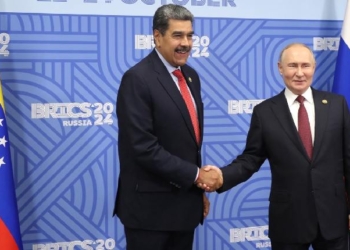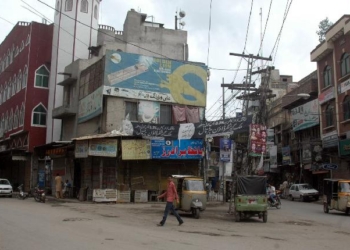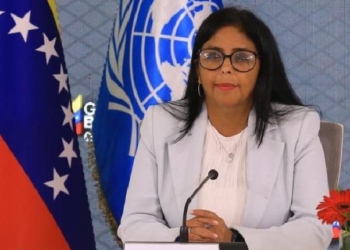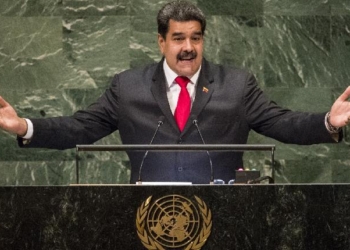New Delhi: Since the partition of the Indian subcontinent in 1947, Pakistan has deliberately fostered an anti-India narrative that permeates all facets of its society. While the historical context of partition and the ongoing Kashmir conflict provide the geopolitical backdrop, the institutionalisation of animosity towards India took root in earnest during General Zia-ul-Haq’s rule.
Over time, this strategy has adapted to shifting political realities, media environments, and educational frameworks.
This article examines how Pakistan sustains an anti-India narrative, focusing on four key areas: the role of the education system, the influence of the media, the use of anti-India rhetoric by political leaders, and the wider societal consequences of this entrenched hostility.
Education System: Indoctrination through curriculum
Pakistan’s education system serves as arguably the most powerful instrument for embedding anti-India sentiment within the population.
The foundations of this narrative were laid during General Zia-ul-Haq’s regime (1977-1988), driven by a vision of an Islamic state positioned against a secular, Hindu-majority India. Zia’s rule saw a profound overhaul of the Pakistani curriculum, where enmity towards India was systematically woven into the educational content.
Often credited with the Islamisation of Pakistan, Zia’s era significantly reshaped the educational landscape, not merely for religious indoctrination but to forge a national identity in stark opposition to India. Textbooks were restructured to glorify Islamic history and consistently cast India as the principal antagonist, achieved through a selective portrayal of historical events that depicted India as an aggressor and an enemy of Islam.
An extensive analysis by the Sustainable Development Policy Institute (SDPI) of textbooks from this period found that 78 per cent of the content related to India painted it as a perpetual enemy, heavily emphasising religious conflict. The wars of 1947, 1965, and 1971 were framed not as geopolitical struggles but as religious confrontations, with Pakistan portrayed as the defender of Islam against Hindu aggression.
Additionally, 85 per cent of references to Hindus in these textbooks were negative, frequently associating them with deceit and moral decay.
The end of Zia’s regime did not mark a shift away from the anti-India narrative. Successive governments, whether military or civilian, have continued to embed anti-India sentiment within the educational curriculum.
A follow-up study by the Sustainable Development Policy Institute (SDPI) in 2016 found that, despite multiple reforms, the content in history and social studies textbooks remained largely unaltered.
Around 70 per cent of material concerning India still portrayed it negatively, and 90 per cent of students surveyed believed India to be an enemy state – an outlook shaped by their education.
This persistent depiction of India as a hostile neighbour in Pakistani textbooks has lasting consequences, embedding a deeply rooted perception of India as the “other” and fostering a sense of ongoing conflict that spans generations.
This approach not only distorts historical realities but also perpetuates a culture of intolerance, complicating efforts towards peace and reconciliation between the two nations.
A comparative study by the Jinnah Institute in 2017 of Pakistani and Indian textbooks further underscores the stark contrast in how each country depicts the other.
While Indian textbooks are not without bias, they generally promote secularism and coexistence, with only 20 per cent of the content about Pakistan being overtly negative. In contrast, Pakistani textbooks remain focused on the religious and ideological divide, portraying India as a persistent threat to Pakistan’s sovereignty and Islamic identity.
This educational approach has profound implications. By instilling anti-India sentiment from an early age, Pakistan cultivates a populace that is not only suspicious of its neighbour but also supportive of policies that favour conflict over cooperation. This indoctrination through education ensures that the narrative of enmity is firmly embedded in Pakistani society, posing a significant obstacle to peace.
Media’s role: Amplifying hostility
The media in Pakistan plays a pivotal role in reinforcing and amplifying the anti-India narrative cultivated by the education system. From the state-controlled media during Zia-ul-Haq’s era to today’s vibrant yet polarised media landscape, the depiction of India as an existential threat has remained a constant theme. This narrative permeates not just news outlets but also entertainment, social media, and various other forms of mass communication.
Under General Zia-ul-Haq, the media was tightly regulated by the state and primarily functioned as a vehicle for government propaganda. India was persistently cast as the aggressor in all conflicts, and the notion of an imminent Indian threat was used to legitimise Zia’s repressive policies. This state-dictated narrative fostered an environment where dissent equated to disloyalty, and questioning the anti-India stance was deemed unpatriotic.
The content broadcast during this period was heavily censored to ensure alignment with the government’s ideological position. News reports were crafted to highlight Indian aggression, particularly over Kashmir while downplaying or ignoring any provocative actions by Pakistan.
This selective reporting created a distorted reality in which Pakistan was always portrayed as the victim and India as the villain. In the years following Zia’s regime, Pakistan’s media landscape underwent significant changes with the rise of private television channels and the growing influence of digital media.
Yet, the anti-India narrative remained largely unaltered. Private news channels, in their quest for viewership, often relied on sensationalism, with India-bashing becoming a dependable way to boost ratings.
Television dramas and films have also contributed to reinforcing this anti-India narrative. Indian characters in Pakistani dramas are often portrayed as devious and malicious, reinforcing stereotypes ingrained in the public mind through decades of state-driven propaganda.
This depiction of India as a land of treachery and deceit is not confined to fictional media but extends to talk shows, news analysis programmes, and even comedy sketches. The impact of this sustained media campaign is evident in public perceptions of India.
A 2019 Pew Research Center survey found that 76 per cent of Pakistanis viewed India as a significant threat, with 64 per cent considering it an “enemy” rather than a competitor or rival. This perception is not merely a product of historical animosity but is actively shaped and reinforced by the media.
With the rise of social media, the spread of anti-India sentiment has become more widespread and difficult to regulate. Platforms such as Facebook, Twitter, and YouTube are often used to circulate misinformation, conspiracy theories, and incendiary content about India. This digital propaganda is frequently crowd-sourced, with individuals and groups contributing to a vast network of anti-India rhetoric.
A 2018 study by the Pakistan Institute of Peace Studies (PIPS) found that 65 per cent of the most popular posts on Pakistani social media about India were negative, and 40 per cent contained misinformation or exaggerated claims aimed at inciting hostility. Such content is often widely shared, reaching millions and reinforcing existing biases. The anonymity and virality of social media make it an ideal platform for spreading hate.
Unlike traditional media, where some editorial oversight exists, social media allows anyone with internet access to shape the narrative. This democratisation of information has created an environment where falsehoods and half-truths about India can spread unchecked, further entrenching anti-India sentiment within Pakistani society.
Political exploitation: Harnessing hostility for power
The political exploitation of anti-India sentiment has been a persistent feature in Pakistan’s domestic politics. From military rulers to elected leaders, the portrayal of India as a threat has been used to galvanise public support, legitimise military dominance, and divert attention from internal issues.
The Pakistani military has been a major advocate of the anti-India narrative. Since Pakistan’s creation, the military has positioned itself as the defender of the nation’s sovereignty and Islamic identity, with India depicted as the principal adversary. This narrative has been employed to justify the military’s substantial allocation of the national budget and its dominance over civilian governance.
According to the Stockholm International Peace Research Institute (SIPRI), Pakistan’s defence spending as a percentage of GDP has consistently ranked among the highest globally.
In 2020, Pakistan allocated 4.0 per cent of its GDP to defence, compared to India’s 2.9 per cent. This disparity is even starker when considering that Pakistan’s GDP is much smaller than India’s. The military justifies this high level of expenditure by citing the perceived threat from India – a narrative carefully nurtured over decades.
However, this emphasis on defence has come at a considerable cost to Pakistan’s socio-economic development. Funds that could have been directed towards education, healthcare, and infrastructure have instead been diverted to sustain a large military establishment.
This resource allocation reflects the military’s prioritisation of the anti-India narrative over the welfare of the Pakistani populace. Anti-India rhetoric is not confined to the military; it is also a staple of election campaigns and political discourse in Pakistan.
Politicians across the board have utilised the notion of India as an existential threat to rally support, divert attention from governance failures, and silence dissent.
During the 2018 general elections, for instance, Imran Khan, leader of the Pakistan Tehreek-e-Insaf (PTI) party, frequently invoked the Kashmir issue and the perceived threat from India in his speeches. Khan’s rhetoric cast India as an aggressive neighbour, determined to destabilise Pakistan. This messaging resonated with voters conditioned to view India through an adversarial lens, aiding Khan in securing a decisive victory.
The political exploitation of anti-India sentiment is not without consequences. It perpetuates a cycle of hostility that becomes difficult to break, as leaders compete to outdo one another in their antagonism towards India. This dynamic has contributed to the entrenchment of hardline positions on both sides, complicating diplomatic efforts to resolve conflicts such as Kashmir.
The domestic political advantages of leveraging anti-India rhetoric have profound implications for Pakistan’s foreign policy and regional stability. The narrative of perpetual hostility towards India has shaped a foreign policy that is frequently reactive and confrontational.
This stance has led to Pakistan’s isolation on the international stage, evident in its strained relations with traditional allies and growing dependence on China. The effects of this narrative are also visible in Pakistan’s conduct within multilateral forums.
In bodies like the United Nations and the South Asian Association for Regional Cooperation (SAARC), Pakistan’s approach towards India has often been obstructionist, hindering meaningful dialogue and cooperation. This has stalled regional integration and development, leaving South Asia as one of the least economically integrated regions globally.
The persistent use of anti-India rhetoric in Pakistan’s political landscape has resulted in a foreign policy that is often dictated by domestic political agendas rather than a coherent vision for regional peace and stability. This has entrenched a cycle of mistrust and hostility, obstructing efforts to resolve longstanding disputes and fostering a more stable and prosperous South Asia.
Societal implications: Erosion of national cohesion and progress
The prolonged propagation of an anti-India narrative in Pakistan carries significant repercussions for Pakistani society. This discussion examines how this hostility towards India has not only tainted public perception but also weakened national cohesion, hindered economic development, and stymied prospects for regional cooperation.
One of the most profound effects of this narrative is its role in fragmenting Pakistan’s national identity. By defining itself primarily in opposition to India, Pakistan has struggled to cultivate a positive and cohesive national identity that transcends ethnic, linguistic, and sectarian divides.
The focus on India as an external enemy has often been employed to mask internal divisions. However, this approach has clear limitations. Emphasising external threats can deepen internal tensions, as various groups within Pakistan perceive the state’s priorities as skewed towards defence and security rather than social and economic development.
This is particularly evident in regions like Balochistan and Khyber-Pakhtunkhwa, where grievances over economic neglect and political marginalisation have intensified calls for greater autonomy or even secession.
A 2020 report by the International Crisis Group (ICG) underscored the growing discontent among marginalised communities in Pakistan, especially given the state’s preoccupation with external threats like India.
The report found that while 74 per cent of Pakistanis in Punjab viewed India as the primary threat, only 42 per cent in Balochistan and 50 per cent in Sindh felt the same, with many pointing to economic hardship and political exclusion as their main concerns.
The economic consequences of the anti-India narrative are similarly significant. The emphasis on defence spending and prioritising security concerns over economic development have stifled Pakistan’s economic growth. Furthermore, the narrative of hostility towards India has curtailed opportunities for trade and economic cooperation, depriving Pakistan of the potential benefits of regional integration.
Trade between India and Pakistan has been heavily restricted, with both countries imposing high tariffs and non-tariff barriers on each other’s goods.
According to the World Bank, trade between the two nations could be 10 to 15 times higher than current levels if relations were normalised and trade barriers reduced. The potential for economic cooperation is immense, particularly in sectors such as textiles, agriculture, and energy, where both countries possess complementary strengths.
However, the economic isolation resulting from the anti-India narrative has left Pakistan more exposed to external shocks. The lack of trade diversification and over-reliance on a narrow range of export markets have made Pakistan’s economy less resilient to global economic fluctuations.
This vulnerability has been especially evident during economic crises, where Pakistan has repeatedly needed international bailouts to stabilise its economy. The anti-India rhetoric has also hindered broader regional cooperation in South Asia.
The South Asian Association for Regional Cooperation (SAARC), established to promote economic integration and regional development, has been effectively paralysed by the ongoing hostility between India and Pakistan. The inability to cooperate on critical issues such as trade, energy, and infrastructure development has denied the region the benefits of collective action.
A 2017 report by the Asian Development Bank (ADB) estimated that regional integration could boost South Asia’s GDP by up to 2.2 per cent, lifting millions out of poverty.
Yet, the enduring tensions between India and Pakistan have prevented this potential from being realised, as both countries often prioritise bilateral disputes over regional cooperation.
The hostility towards India also limits Pakistan’s capacity to engage constructively with other South Asian countries. By viewing regional relations primarily through the lens of its conflict with India, Pakistan has often found itself isolated in regional forums, with other South Asian countries increasingly aligning with India on major issues. This isolation has further diminished Pakistan’s influence in the region, reducing its ability to shape regional dynamics in its favour.
The cultivation of an anti-India narrative in Pakistan, initiated during General Zia-ul-Haq’s era and perpetuated through the education system, media, and political discourse, has had a corrosive impact on Pakistani society. It has skewed historical facts, fostered a culture of intolerance, and obstructed the country’s social, economic, and political progress.
If Pakistan does not take steps to dismantle this narrative, it risks crumbling under the burden of its own misleading propaganda. The cost of sustaining this animosity is too steep, both in terms of lost developmental opportunities and the ongoing conflict in South Asia.
For the sake of its future, Pakistan must adopt a more balanced and forward-looking stance, one that prioritises the welfare of its citizens over the continuation of hostility with its neighbour.
Pakistan’s future hinges on its ability to break away from this cycle of enmity and to build a national identity that is not shaped by opposition to India, but by a commitment to peace, development, and regional cooperation. Only by doing so can Pakistan hope to attain the stability and prosperity its people rightfully deserve.
(IANS)















